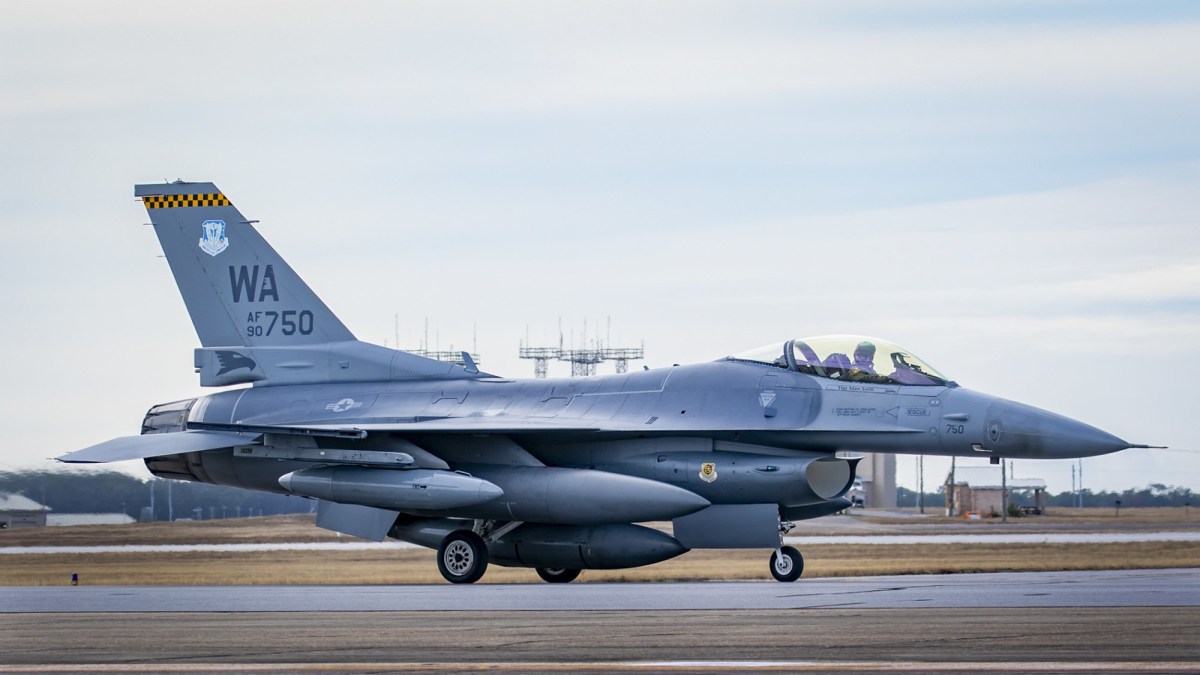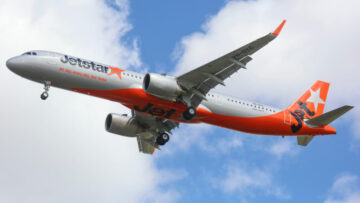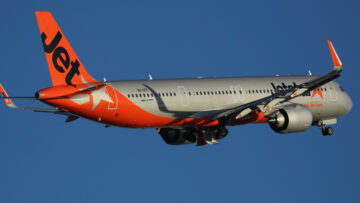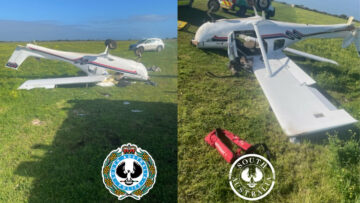
The US military is about to begin integrating autonomous test systems into three F-16 Fighting Falcon multirole fighter jets to expand future autonomy and payload solutions.
The first trio of F-16 Fighting Falcons arrived at Eglin Air Force Base in Florida to take part in the Viper Experimentation and Next-gen Operations Model – Autonomy Flying Testbed program on 3 April.
Under the next stage of the VENOM program, the aircraft will be modified into test platforms to rapidly evaluate autonomous capabilities.
“The VENOM program marks a pivotal chapter in the advancement of aerial combat capabilities,” according to VENOM developmental test lead Major Ross Elder.
“This transformative program holds the potential to redefine air combat paradigms by fostering novel autonomous functions for current and future crewed and uncrewed platforms.
“We look forward to the culmination of years of engineering and collaboration, as VENOM leads a measured step towards a new age of aviation.”
Autonomy data and artificial intelligence experimentation have already been undertaken by 96th Test Wing and 53rd Wing personnel at the USAF Base, and the programme is expected to accelerate the testing of autonomy software on crewed and uncrewed aircraft.
Similar to F-16 and F-15 testing at Eglin, the VENOM program will undergo developmental and operational testing via the 40th Flight Test Squadron and the 85th Test and Evaluation Squadron.
“Having both developmental test and operational test pilots working and flying from the same location allows for daily collaboration and reduces the stove piping of knowledge and lessons learned,” according to VENOM operational test lead Lt. Col. Jeremy Castor.
The test aircraft are not expected to be fully unmanned – pilots will be seated in the cockpit to monitor autonomy to ensure flight and mission systems test objectives are met during testing.
Operators will also provide feedback during modelling, simulation, and post-flight to the autonomy developers to improve performance over time and ensure autonomy is making appropriate decisions before and during flight.
“It’s important to understand the ‘human-on-the-loop’ aspect of this type of testing, meaning that a pilot will be involved in the autonomy in real time and maintain the ability to start and stop specific algorithms,” said Lt. Col. Joe Gagnon, 85th TES commander.
“There will never be a time where the VENOM aircraft will solely ‘fly by itself’ without a human component.”
“With regards to VENOM-AFT, rapid tactical autonomy development focuses on ‘speed-to-ramp,’ meaning, go as fast as you can, safely, to ensure we get CCA flying as quickly as possible.”
- SEO Powered Content & PR Distribution. Get Amplified Today.
- PlatoData.Network Vertical Generative Ai. Empower Yourself. Access Here.
- PlatoAiStream. Web3 Intelligence. Knowledge Amplified. Access Here.
- PlatoESG. Carbon, CleanTech, Energy, Environment, Solar, Waste Management. Access Here.
- PlatoHealth. Biotech and Clinical Trials Intelligence. Access Here.
- Source: https://australianaviation.com.au/2024/04/us-air-force-to-integrate-autonomous-systems-into-f-16-aircraft/
- :is
- :not
- :where
- 1
- 2024
- 40th
- a
- ability
- About
- accelerate
- According
- advancement
- age
- AIR
- Air Force
- aircraft
- algorithms
- allows
- already
- also
- and
- appropriate
- April
- ARE
- arrived
- artificial
- artificial intelligence
- AS
- aspect
- At
- autonomous
- autonomous systems
- Autonomy
- aviation
- base
- BE
- been
- before
- begin
- BEST
- both
- by
- CAN
- capabilities
- Chapter
- Cockpit
- collaboration
- combat
- component
- Current
- daily
- data
- decisions
- designed
- developers
- Development
- developmental
- during
- elder
- Engineering
- ensure
- evaluate
- evaluation
- Expand
- expected
- falcon
- FAST
- feedback
- fighting
- First
- flight
- florida
- flying
- focuses
- For
- Force
- Forward
- fostering
- from
- fully
- functions
- funded
- future
- get
- Go
- Have
- holds
- HTTPS
- human
- image
- important
- improve
- in
- integrate
- Integrating
- Intelligence
- into
- involved
- jeremy
- Jets
- joe
- jpg
- knowledge
- lead
- Leads
- learned
- Lessons
- Lessons Learned
- location
- Look
- maintain
- major
- Making
- max-width
- meaning
- measured
- met
- Military
- Mission
- model
- modelling
- modified
- Monitor
- never
- New
- next
- novel
- objectives
- of
- on
- operational
- Operations
- over
- paradigms
- part
- performance
- Personnel
- pilot
- Pilots
- pivotal
- Platforms
- plato
- Plato Data Intelligence
- PlatoData
- possible
- potential
- Program
- programme
- provide
- quickly
- rapid
- rapidly
- real
- real-time
- redefine
- reduces
- regards
- safely
- Said
- same
- simulation
- Software
- solely
- Solutions
- specific
- Stage
- start
- Step
- Stop
- Systems
- tactical
- Take
- test
- Testing
- that
- The
- this
- three
- time
- to
- towards
- transformative
- trio
- type
- undergo
- understand
- us
- US military
- Venom
- via
- we
- welcomed
- will
- Wing
- without
- working
- years
- you
- zephyrnet










